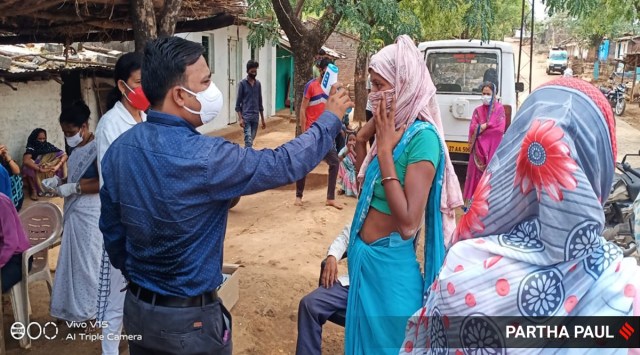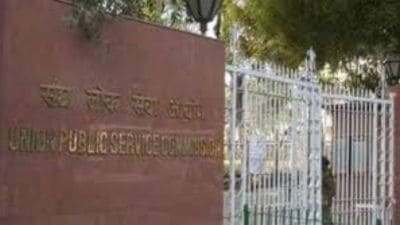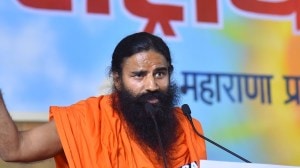- India
- International
How authorities battled extreme vaccine hesitancy in remote Amravati villages
Innovative out of the box thinking and the personal involvement of some officials helped end the hesitancy of local residents, with three villages in Melghat soon recording 100 per cent vaccination of its eligible population.
 Misinformation was the main reason for this hesitancy and the main reason for this was the lack of information in local language.
Misinformation was the main reason for this hesitancy and the main reason for this was the lack of information in local language.Earlier this year, when the central government rolled out the Covid-19 vaccination drive, officials in Melghat region of Amravati district and the neighbouring Washim district had faced extreme opposition from the local population against the drive. Myths, rumours and suspicions were rife, and the vaccination centres were empty for days on end.
Innovative out of the box thinking and the personal involvement of some officials helped end the hesitancy of local residents, with three villages in Melghat soon recording 100 per cent vaccination of its eligible population.
The story of the tribal village Chinchkheda, in Chikaldhara taluka of Amravati district, is an example of out of the box thinking, which helped the administrators conquer vaccine hesitancy.
Back in March, when vaccination had started, villagers had initially refused to get their doses. Dr Mittali Sethi, sub-divisional officer and project officer of ITDP (Integrated Tribal Development Programme) Dharni, said the predominantly Korku tribal villagers had cited fear of death and impotency as their reason for not coming forward to get their vaccine.
“The problem was not unique to Chinchkheda… the same was the story across all the 350 villages in the sub-division,” she said.

Misinformation was the main reason for this hesitancy and the main reason for this was the lack of information in local language. “Whatever information about the vaccine or the Covid-19 disease itself was available only in Marathi, while Korku was the spoken language in the villages,” she said.
The best way to beat this hesitancy was to present information in a language and format that was easily understood by the local population. Dr Sethi’s office undertook a massive information and communication drive to counter this hesitancy. The 11 primary health care centres in the division were also armed with enough material.
Soon, the YouTube channel of the project office came up with a skit in local Korku language to counter the hesitancy about the vaccine. Armed with a public broadcast system, officials of the project office and NGOs soon took to playing this video once they reached the villages.
“They played the video on their mobile and it was heard across the village,” said Dr Sethi. In Chinchkheda, the district authorities also roped in the local panchayat samitee members who were the first ones to get their vaccines. “These people travelled back to the village soon after to prove that no one dies after taking their shots. We also got in the local fair grain shop to spread the message, which really helped,” she said.
Early in May, Chinchkheda became the first village in the entire state which had vaccinated all its residents above 45. Soon, two more villages in the talukas of Bahadurpur and Ruiphata were added to the list.
Melghat, with its thick forests and remote terrain, is always a challenge for policy makers in terms of last-mile connectivity. When the Covid-19 pandemic began, many of the tribal residents of Amravati had hidden their symptoms as they feared being hospitalised. Talks with local representatives and district authorities helped in countering such fears and apprehensions.
However, by then the supply of the vaccines had become scare and till date, the division has been able to vaccine 17 per cent (Dharni) and 21 per cent (Chikaldhara) of the above 45 population. “Now, there is no hesitancy… people are calling us to conduct camps in their villages,” said Dr Sethi.
In the neighbouring Washim district, authorities were equally stumped when they faced vaccine hesitancy, with most vaccine camps running empty. District Collector Shanmugarajan S said they decided to try a personal touch to tackle vaccine hesitancy.
Instead of taking his vaccine at the civil hospital, the collector travelled to a primary health centre in Mangrulpir taluka in the district to be vaccinated. “I had urged all other government officials to do the same, which helped in spreading the message,” he said.
This was over and above the regular campaigns run by NGOs and the state Health department to spread the message. As of Monday, the district has been able to vaccinate 32 per cent of its total eligible population of 4.15 lakh.
Click here to join Express Pune WhatsApp channel and get a curated list of our stories
Buzzing Now
Apr 16: Latest News
- 01
- 02
- 03
- 04
- 05






































